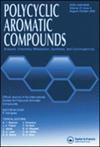伊朗伊拉姆市街道粉尘中重金属(Loid)s和多环芳烃(PAHs)的现状、来源及风险评估
IF 2.4
3区 化学
Q2 CHEMISTRY, ORGANIC
引用次数: 0
摘要
选取25份伊拉姆市街道粉尘样本,探讨其重金属(样物质)和多环芳烃(PAHs)可能存在的生态健康风险。结果表明,重金属(样态)Pb、Zn、Cu、Cr、Cd、Ni、V和As的平均浓度分别为52、213、63、46、0.4、44、31和5 mg/kg。除Cr和V外,所有重金属(样金属)的平均浓度均高于基线值数倍。利用平均富集系数(EF)和污染指数(PI)对该地区Zn和Pb进行了评价;Nemerow综合污染指数(NIPI)显示76%的样本属于高污染。根据主成分分析(PCA),得出伊拉姆市街道扬尘重金属污染有三个主成分参与。例如,Cu、Cr、Cd和Ni的污染源可能来源于人类活动,包括交通、轮胎折旧和汽油的使用。Pb和Zn的来源主要是金属腐蚀、垃圾燃烧和工业废气等人为活动,V和as的来源主要是自然。11种多环芳烃的总和为167 ~ 11497 μg/kg,平均值为2242 μg/kg。低分子量(LMW) PAHs平均浓度为1471 μg/kg,占总PAHs的66%;它们的来源主要与燃烧和热原排放有关。PCA还显示,多环芳烃主要来源于化石燃料的燃烧。RQ∑PAHs (MPCs)和RQ∑PAHs (NCs)分别为>;1和≥800,表明该区PAHs存在较高的生态系统风险。RQ∑PAHs (MPCs)均值为4,RQ∑PAHs (NCs)均值为1021,表明伊拉姆市街道粉尘PAHs生态系统风险较高。街道粉尘多环芳烃的毒性当量商(TEQ)在26 ~ 199 μg/kg之间。成人和儿童的总癌症风险分别为3.92 × 10 - 4和4.06 × 10 - 4,表明通过皮肤接触和摄入粉尘的潜在癌症风险非常高。本文章由计算机程序翻译,如有差异,请以英文原文为准。
Status, Source, and Risk Assessment of Heavy Metal(Loid)s and Polycyclic Aromatic Hydrocarbons (PAHs) in the Street Dust of Ilam, Iran
A total of 25 Ilam street dust specimens were sampled to investigate the possible ecological and health risks of heavy metal(loid)s and polycyclic aromatic hydrocarbons (PAHs). We found that the average concentrations of heavy metal(loid)s, namely Pb, Zn, Cu, Cr, Cd, Ni, V, and As, were 52, 213, 63, 46, 0.4, 44, 31, and 5 mg/kg, respectively. The average concentration of all heavy metal(loid)s except for Cr and V was several times higher than the baseline values. We evaluated Zn and Pb in the region using the average enrichment factor (EF) and pollution index (PI); the Nemerow integrated pollution index (NIPI) indicated that 76% of the samples had high degrees of pollution. According to principal component analysis (PCA), three principle components are involved in the heavy metal(loid) pollution of Ilam street dust. For example, the pollution sources of Cu, Cr, Cd, and Ni likely originated from anthropogenetic origins, including traffic, tire depreciation, and gasoline use. The sources of Pb and Zn were other anthropogenic activities, such as metal corroding and the combustion of garbage and gases from industries, while V and As were probably from natural sources. The range of sum over 11 PAHs was 167–11,497 μg/kg with a mean of 2242 μg/kg. The concentration of low molecular weight (LMW) PAHs averaged 1471 μg/kg, accounting for 66% of the total PAHs; their sources were mainly associated with combustion and pyrogenic emissions. The PCA also revealed that PAHs mainly originated from burning fossil fuels. The values of RQ∑PAHs (MPCs) and RQ∑PAHs (NCs) were respectively >1 and ≥800, indicating a high ecosystem risk for PAHs. Mean values for RQ∑PAHs (MPCs) and RQ∑PAHs (NCs) were 4 and 1021, respectively, implying that Ilam street dust poses a relatively high ecosystem risk of PAHs. Street dust PAHs’ toxic equivalency quotient (TEQ) varied from 26 to 199 μg/kg. The total cancer risk was 3.92 × 10−4 and 4.06 × 10−4 for adults and children, respectively, indicating that the potential for cancer risk is very high through dust dermal contact and ingestion.
求助全文
通过发布文献求助,成功后即可免费获取论文全文。
去求助
来源期刊

Polycyclic Aromatic Compounds
化学-有机化学
CiteScore
3.70
自引率
20.80%
发文量
412
审稿时长
3 months
期刊介绍:
The purpose of Polycyclic Aromatic Compounds is to provide an international and interdisciplinary forum for all aspects of research related to polycyclic aromatic compounds (PAC). Topics range from fundamental research in chemistry (including synthetic and theoretical chemistry) and physics (including astrophysics), as well as thermodynamics, spectroscopy, analytical methods, and biology to applied studies in environmental science, biochemistry, toxicology, and industry. Polycyclic Aromatic Compounds has an outstanding Editorial Board and offers a rapid and efficient peer review process, as well as a flexible open access policy.
 求助内容:
求助内容: 应助结果提醒方式:
应助结果提醒方式:


